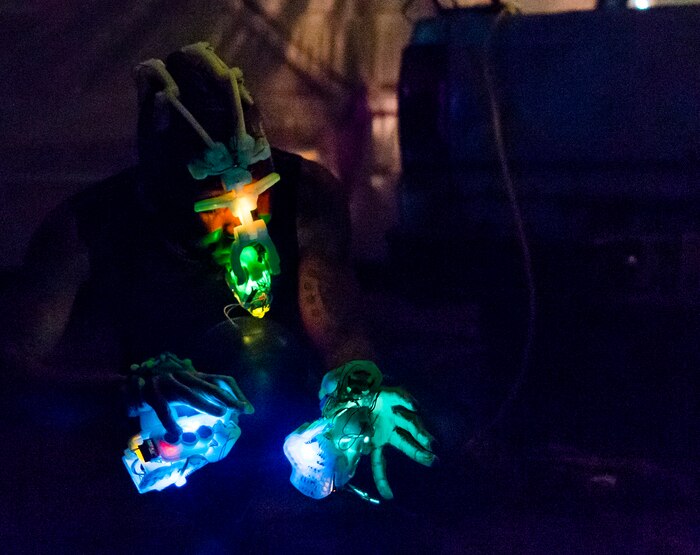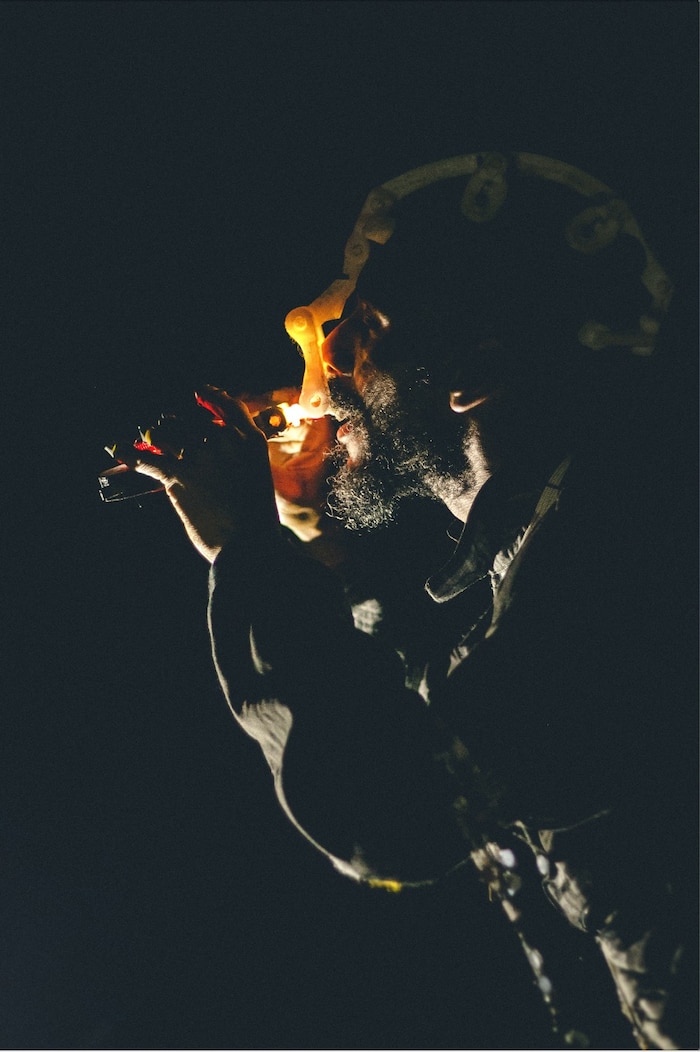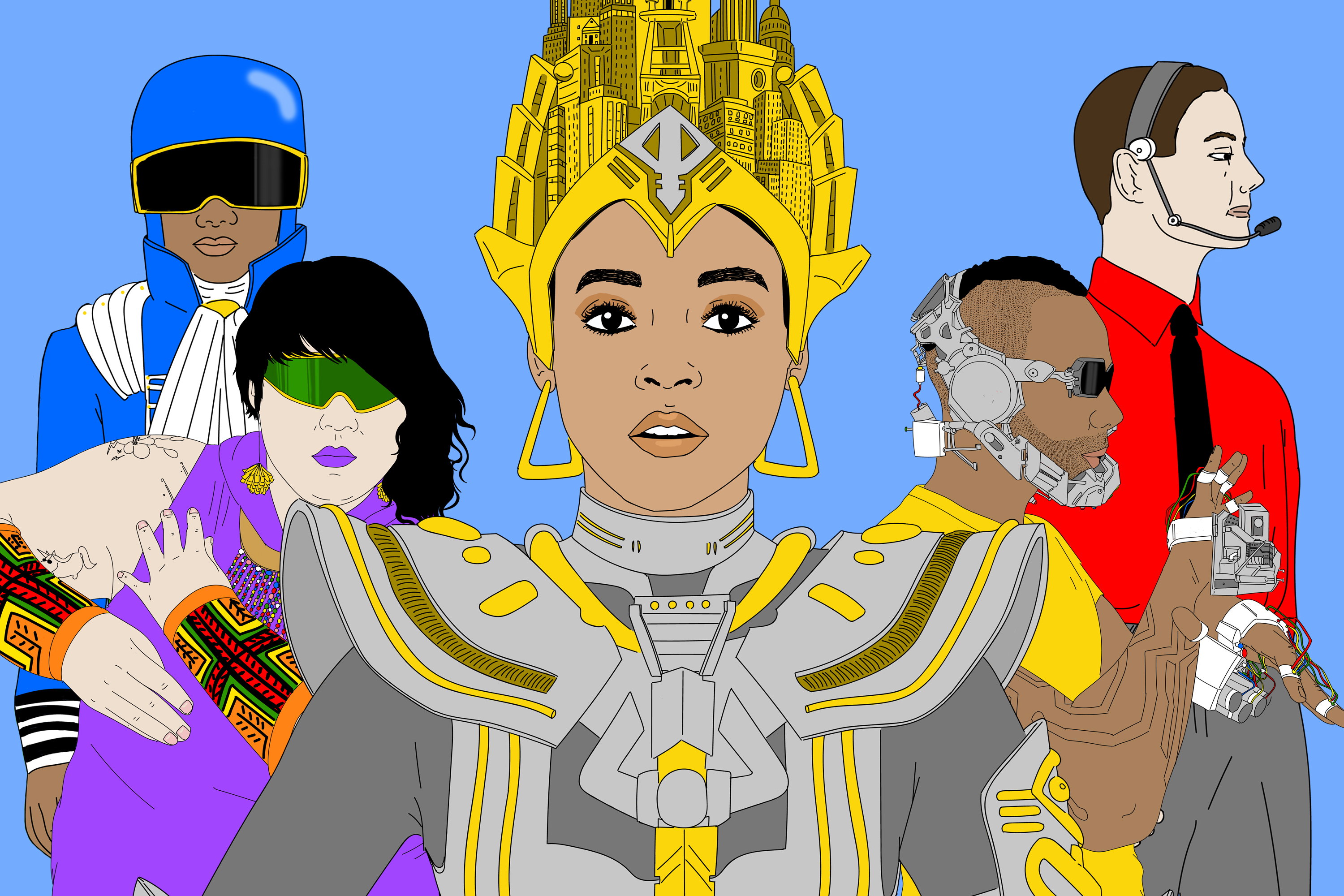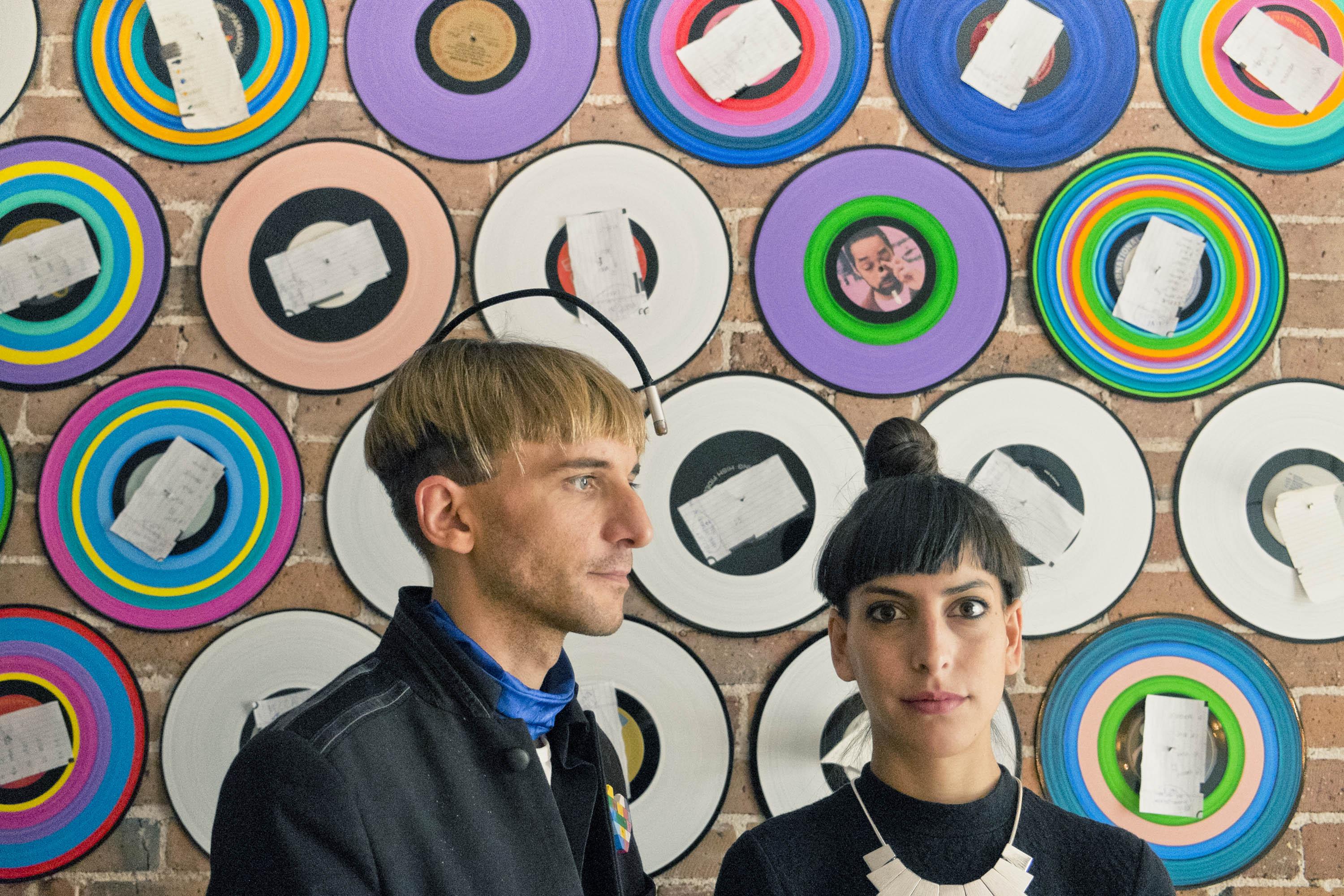More Than A Robot: Onyx Ashanti’s Digital Manipulations

Onyx Ashanti is in search of autonomy. He creates sound with the movements of his body: a finger tap, a hand wave, arms unfurling to create the kind of electronic beats that usually come from samplers. His performances typically offer no more than two sonic elements simultaneously, but with clever samples and the kind of audience-baiting drops that make EDM popular. They’re much quieter and more mid-range in Ashanti’s hands, though, which flutter and tense up as he coaxes sound out of 3D-printed contraptions. He almost sounds like an encyclopedia of techno – which makes sense, given he’s lived through the full history of electronic music.
Having trained as a saxophonist since the sixth grade, Ashanti abandoned the instrument for electronics shortly after graduating from high school. In 1996 he took ecstasy for the first time, at a rave in Los Angeles, and it changed his life. “It allowed me to distance myself from my own ego and dip into the music in a particular way,” he says.
When George W. Bush took office in 2001, he did what a lot of Americans threatened to do, leaving the country and moving to London. Broken beat was emerging from squat parties on the outskirts of the city, where Ashanti partied and DJed for days on end. He learned about music from his fellow producers and the slew of drugs they all took: ketamine, speed and psilocybin. Each substance deepened his conviction that music had unparalleled communicative access to the human brain and body. “I could see the physical energy of the room,” he says. “[Drugs] helped me understand how the audience reacted when I played something. It was very research-oriented.”
“I found ‘cyborg’ to be disempowering, like I’m an amoeba,” he explains. “I’m vastly more complex.”
As London began to gentrify and the squats became luxury flats, Ashanti returned briefly to the US and then settled Berlin, where he still lives. As he’d managed to do with the rave scene in California and squat culture in the UK, he arrived in Germany at exactly the right time. Rent was still cheap, and you could wander for hours in the outskirts of town without seeing another person. The environment was inspiring and making art was feasible. Ashanti had stopped doing drugs, though. After ten years, he says, there was little left to learn. Instead, he began experimenting with Max/MSP, a visual programming language for building code, which had just arrived on the market.
“It was so alien, and I had built my entire concept of music on software that was set up like [DJ] hardware,” he remembers. “But here’s this software that was agnostic to any idea that could be expressed mathematically. I didn’t know how to approach it, but I knew that I wanted to understand it.” He stepped away from the DJ booth and began to build his first model of a wearable instrument. When the iPhone arrived in 2007, Ashanti started calling software companies almost immediately, asking them to join him in developing movement-based music programs he’d dreamed about for years. They didn’t bite.
“They thought I was too weird,” he laments. “It was a midlife crisis” – he was 40 by then – “so I said, ‘Fuck this shit, I’m just gonna make a fuckin’ instrument to entertain myself.’ If I focus on making something because I want it, [making music] has more meaning to it than just its ability to sell drinks at a club or sell someone else’s software.” Since then, he’s spent almost all his time at home in Berlin refining the way he plays music: honing it to be simultaneously simple and dense, but always self-contained. He describes what he makes as “sonocybernetics,” a self-coined term describing the complex interplay between sound, electronics and brainwaves. He used to call himself a ‘cyborg musician,’ but he’s left that behind. “I found ‘cyborg’ to be disempowering, like I’m an amoeba,” he explains. “I’m vastly more complex.”

The instrument Ashanti ended up making is more a process than an immutable object. Originally, he wanted something attached to his body that worked like a saxophone, because he already knew how to play that. It evolved in pace with whatever technology became available, and with every iteration it’s become easier and cheaper to source. “I’m not trying to reinvent the wheel,” he says. “I use the Arduino” – a cheap and flexible microcontroller that DIY enthusiasts use for everything from instruments to self-cleaning cat boxes – ”because I think it’s perfect and I don’t have to teach someone how to use it,” noting its near-ubiquity in the open source community. He also uses a Raspberry Pi, a computer the size of a credit card, which is less flexible but much more powerful than the Arduino.
Right now, he’s got a few rigs. There’s one that involves a face mask – he calls it an “exovoice” – and two mitt-like controllers that attach to his hands. In advance of the 2016 edition of Moogfest, Ashanti was working on his simplest tool yet: an egg-like shaker with internal switches that outputs binary signals to a Raspberry Pi. The setup is so minimal that a user can wear it 24 hours a day, and because it’s a binary system, the possibilities for communicating with samplers and other electronics are seemingly endless. “Your kinesthetic information is happening all the time,” he says. By wearing this model, “You’re always practicing, always performing.”
Ashanti aims to be a virtuoso in this instrument so that others will try it, too. He blogs sporadically about his process in long posts that reference his technical projects, Afrofuturist theory and Linux tutorials. Sometimes, he allows cracks in the density, reassuring his readers he knows where they’re at. “Yeah I know – Linux is for geeks and nerds,” he wrote earlier this year. “But guess what, you’re going to have to be to do this.” Perhaps not everyone will go as far as he has – a circuit board tattoo runs up his right arm, and he wears “exoskeleton” shoes of his own design instead of store-bought footwear – but if they do, or they want to consider it, Ashanti would welcome them to his post-capitalist musical utopia. “I want to focus on designing a system that’s 100% downloadable, and so inexpensive that no corporation would want to make it,” he says.
In his ideal future, the artist and manufacturer become one, cutting profit out of the creative process and leaving only art and the communities it forges. As the digital technology available to Ashanti advances, the theory underpinning how he uses it has become more organic. In the last few years he’s immersed himself in neuroscience, which has explained the science behind his earlier drug-induced epiphanies: music and the brain are, indeed, profoundly connected. Binary code is in our origins – its patterns are found in African drumming and other musical traditions that predate digital innovation by centuries.
Based on his own research and experiences, Ashanti has concluded that music is the basic human language, and it speaks to the brain in binary code. Anyone who understands this, he says, can tap into an innate potential to make music that addresses our inherent programming. “We already know that music changes how the brain works,” he explains. “So if you’re playing music specifically to change brain states, you change reality, because reality is projected from you.”

